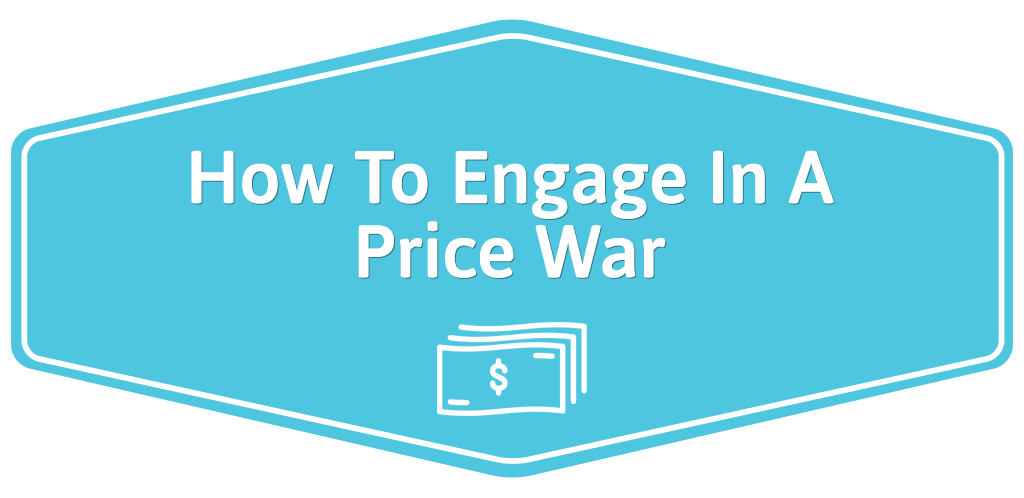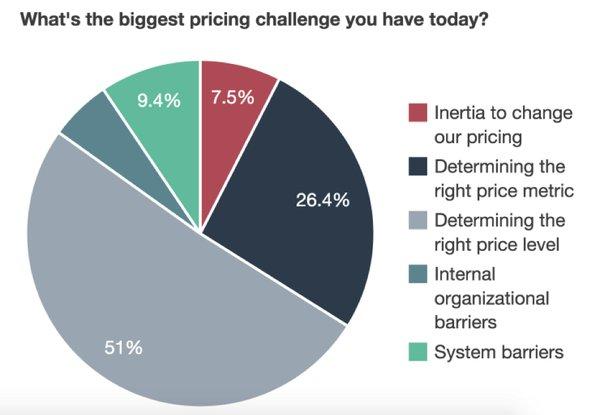
Your SaaS has been working hard to bring in new business. You’re growth-oriented and hitting the phones to land enterprise-level clients who you know your business could serve well. If you can sign up a few more of those, you could convince backers to advance a round of funding…
Then you’re hit with it: “we like your product and can see how it would work for us, but (competitor) is offering a better price. Can you beat it? We will probably go with them if you can’t…”
How do you respond to that? Is your instinct to try and “work something out” just to keep the client, or do you stick to your pricing?
Is it time to engage in a price war?
How To Win A Price War
The best way to win a price war is… not to engage in one in the first place! Price wars make no sense for the future of your SaaS – they only result in a race to the bottom with everyone fighting over scraps.
TechCrunch described the so-called cloud pricing wars as “an increasingly dangerous game”, since companies may be able to reduce prices, but the cost to provide computing is never $0. Nobody can win.
Should you really be worried about competitor pricing?
Figuring out how to correctly price your SaaS is always a challenge. In fact, we know from research that determining pricing levels is the biggest pricing challenge of SaaS.

Image source: Kissmetrics
You need to strike the right balance between features that your clients want and pricing they are prepared to pay for the delivery of that value.
That means by the time a client questions you on it, you’ve probably already done a lot of work leading up to your pricing decisions. Lincoln Murphy points out that value pricing only requires two inputs:
- The customer’s willingness to pay (affected by their value perception), and;
- The customer’s ability to pay.
There are a number of variables which go into those inputs and competitor pricing is only one of them. A variable, not a main input.
Yes, you have to know what your competitors are doing and how they’re charging, largely because you need to know whether or not your customers already have certain expectations (which has definitely become the case with pricing of cloud storage services).
However, you need to own your pricing. You may even need to defend why your pricing is what it is, so the key is pricing correctly based on the value perception of the client.
Your Value Proposition
Getting back to the potential enterprise client you have on the phone, you need to understand a bit more about them and what their needs are. Ask them something like:
“If we put the price aside for a minute, is our product more valuable to you than (competitor’s)?”
This helps you learn about how they perceive your value proposition and what motivates them to search for a SaaS product. Do you meet all of their requirements? Does your competitor? If both of you are equal in the eyes of the customer, you may want to simply suggest they go with your competitor. You will not convince them that you offer more value if they can’t perceive it, so in this case price will always be the sticking point. (This is assuming that you’ve already done all you can to demonstrate the value your product offers).
If may feel strange to let a prospect go, but you cannot keep a client happy who is unhappy with your pricing (without caving and offering them a deal). You really don’t want to cave on price if you can avoid it; while some industries do well with a “competing on price” business model, SaaS is not one of them.
Lincoln Murphy says copying pricing is an absolute ‘do not do’. “Do the work required to ensure your pricing comes from a pricing strategy that is part of your overall marketing strategy.” You went into business because there was something you felt you could deliver better, right?
Assuming you did put some time into your pricing strategy, there are good reasons why you came up with what you did. It’s much better to remain true to your business model than to suddenly start trying to compete based on a different model. If you undercut on price just to gain that one customer, when will that stop?
Emphasize your value
If the client has told you they prefer your product, explore that with them. Perhaps you are offering a more premium service than competitors – point this out. “We offer a premium solution to (problem/s), not the cheapest.”
Perhaps there are features desirable to the prospect which you offer and your competitor doesn’t, or perhaps their pricing shouldn’t be taken at face value. Are there any fees which they are not talking about in their upfront pricing? You need to have done your homework on direct competitors and know how you compare.
Finally on value, evaluate whether the prospect has formed an informed opinion. Are they actually aware of all of the features you offer and how these relate to problems they have? If you’ve done everything you can to convey this information, yet they still want to haggle over price, there really is nothing else to say except to wish them well.
Don’t draw out the negotiation
There are some hagglers out there who will just keep trying. If you’re firm on your price, then indulging them any further is a waste of time for both of you. Let them know you’ve already offered them your best price and that won’t change with their request to “send an email with your best offer”.
You could be spending the time closing other clients who understand the value you can deliver them and are happy with your pricing.
While you might feel uncomfortable letting the customer walk away, know that it is ok to set limits on what you will do (in fact, in business it is preferable!). Chances are the prospect who walks away is not your ideal client anyway. The price haggler will probably be the same customer who comes to you later, wanting a further discount because of another cheaper “competitor” they’ve found.
Of course all of the above is assuming that you did the work initially for properly value pricing your product. If anything like competitor pricing, margins or random guessing came into it, then you probably should go back to the drawing board…
Final Thoughts
No matter how tempted you might be to undercut your competition and engage in a price war, this is not a good strategy for the long-term health of your SaaS.
Your pricing should be value-based and you should have a good understanding of the prospect and how your service fits with what they value. If they don’t see you as a standout and you’ve done all you can to demonstrate value, you are probably better off letting them go.
Be true to your own business model and win by NOT engaging in a price war.
